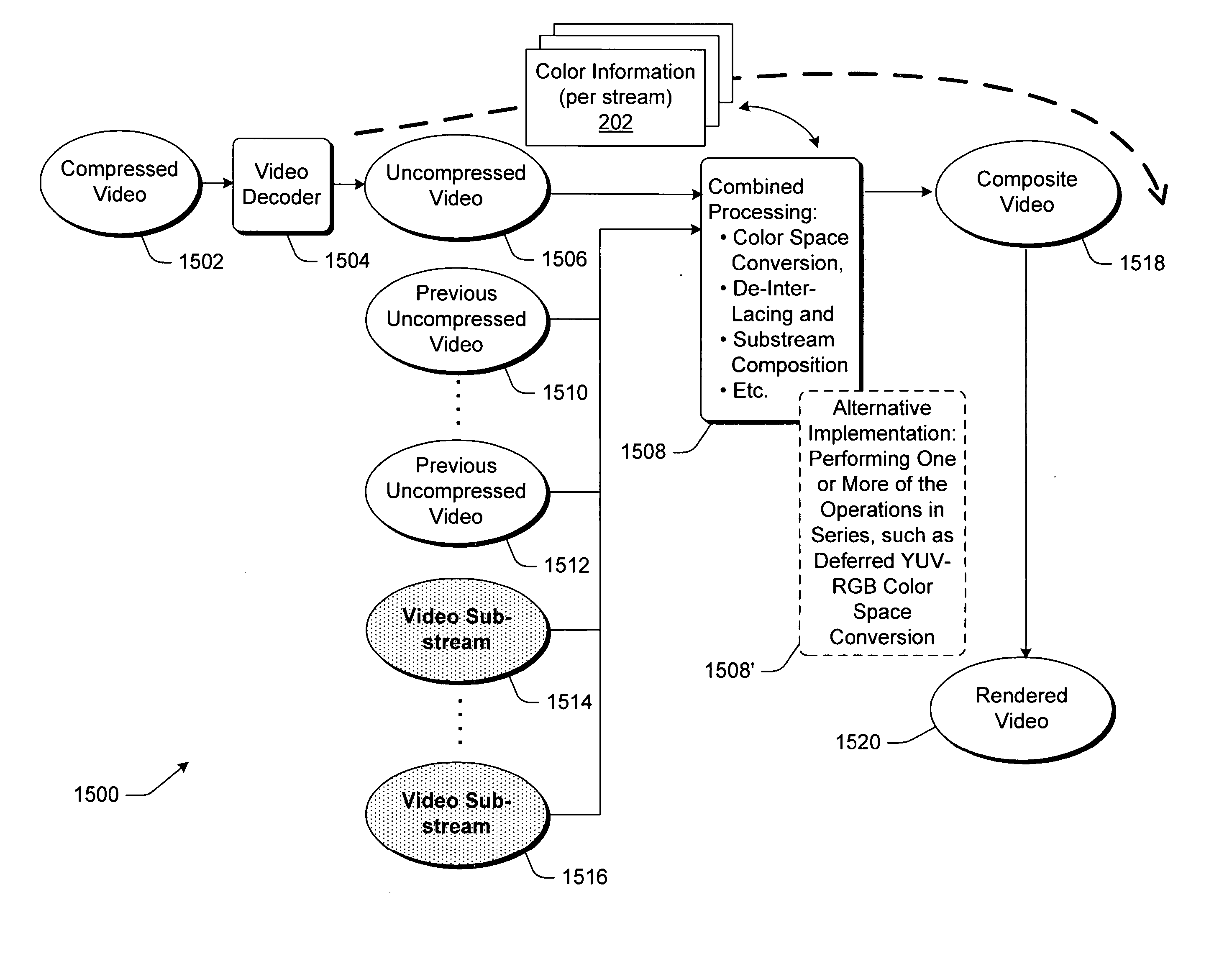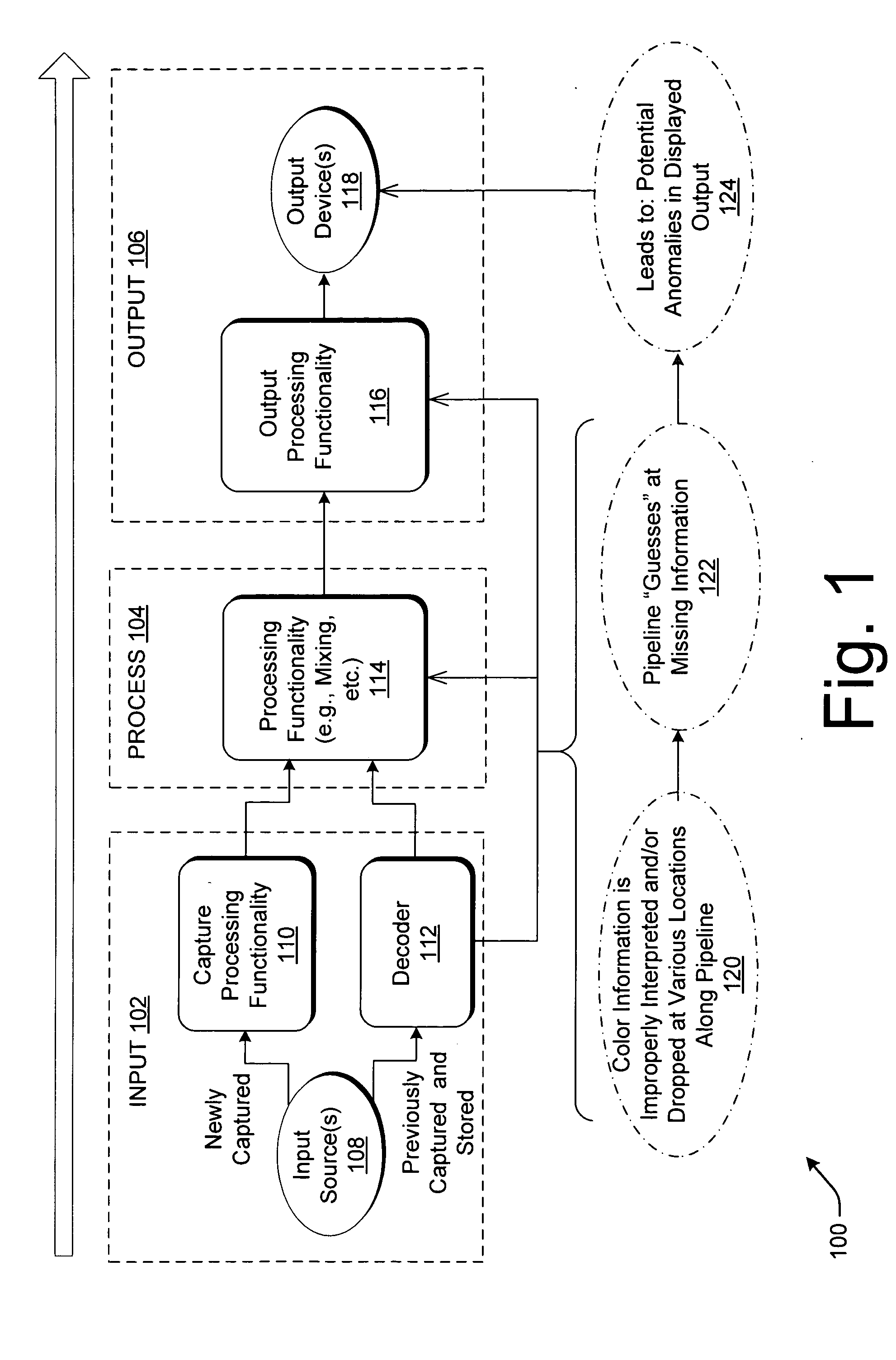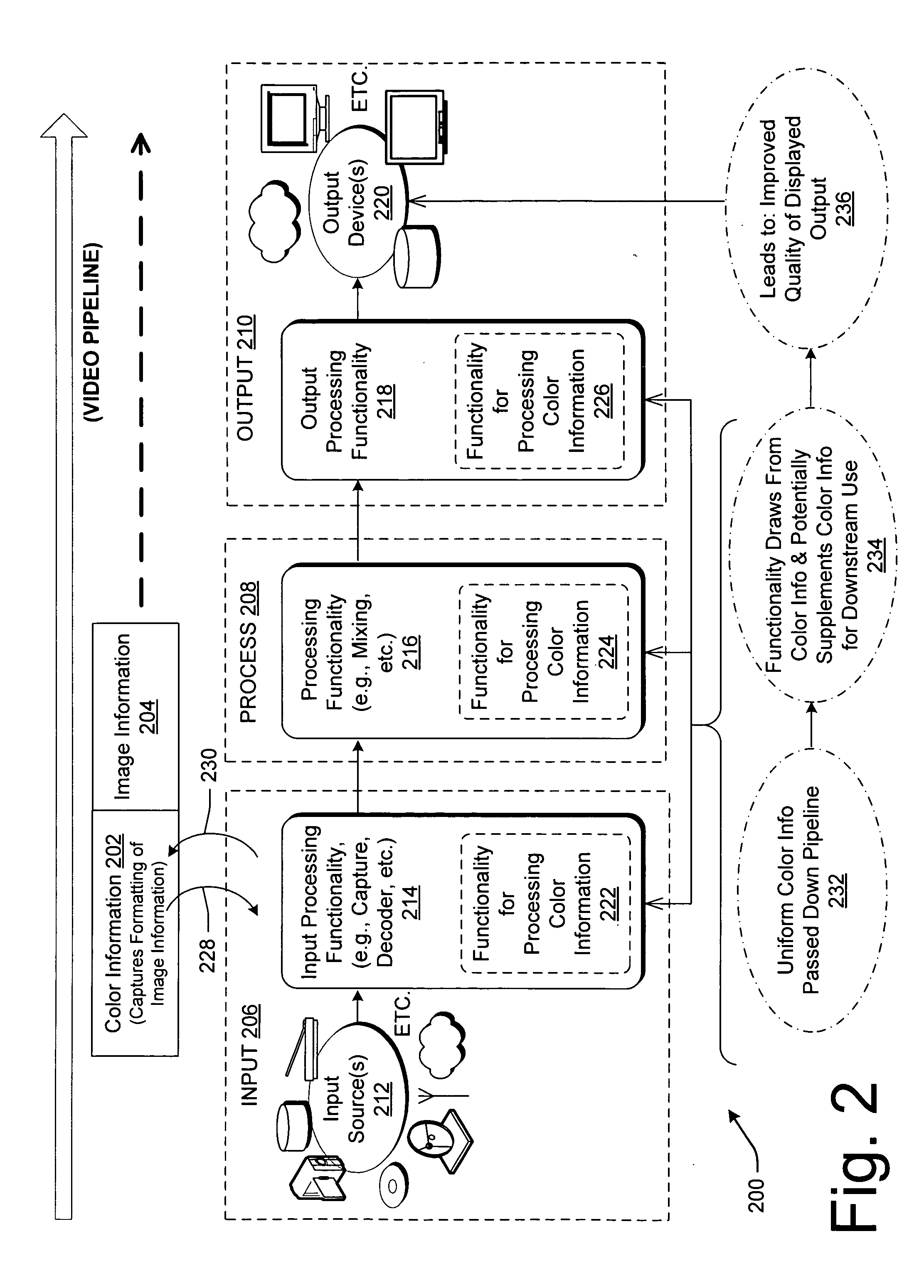Strategies for processing image information using a color information data structure
a color information and data structure technology, applied in the field of image information processing strategies, can solve the problems of inefficient choice of image information transmission coding models, inability to achieve the effect of coding, transmission and processing of image information, and common under-compensation of transfer functions applied by sources for inherent nonlinearity
- Summary
- Abstract
- Description
- Claims
- Application Information
AI Technical Summary
Benefits of technology
Problems solved by technology
Method used
Image
Examples
Embodiment Construction
The following describes exemplary mechanisms and procedures for improving the handling of image information having color content. By way of broad overview, the mechanisms and procedures provide a data structure that captures information regarding the color formatting that has been applied to the image information. This information is referred to as “color information,” while the data structure itself is referred to as the “color information (CI) data structure.” In one exemplary case, the color information may specifically include fields which convey the following information associated with the image information: transfer function information; color primary information; video lighting information; transfer matrix information; nominal range information; and chroma sub-sampling information. This grouping of fields is intended to be illustrative rather than limiting. Other implementations can include additional fields, can omit certain fields identified above, and so forth.
The vide...
PUM
 Login to View More
Login to View More Abstract
Description
Claims
Application Information
 Login to View More
Login to View More - R&D
- Intellectual Property
- Life Sciences
- Materials
- Tech Scout
- Unparalleled Data Quality
- Higher Quality Content
- 60% Fewer Hallucinations
Browse by: Latest US Patents, China's latest patents, Technical Efficacy Thesaurus, Application Domain, Technology Topic, Popular Technical Reports.
© 2025 PatSnap. All rights reserved.Legal|Privacy policy|Modern Slavery Act Transparency Statement|Sitemap|About US| Contact US: help@patsnap.com



